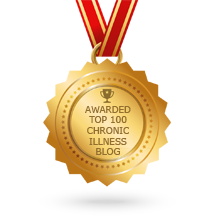Under Pressure
As a human barometer, I feel every single pressure change
that goes on. This phenomenon, or curse, allows me to feel whenever the weather
changes from sunny skies to dull greys, and when it is going to rain. Now, many
people are afflicted with this problem, not just migraine sufferers. Some
people get terrible sinus headaches, or just a bad headache. Yet for me, the
smallest pressure change can set off the plethora of symptoms that accompany a
migraine attack. I get nauseous, I can’t focus and often times I’m so fatigued
that the best way to describe it would be to say that I had been hit by a bus.
So how do I deal with these symptoms, and stop them from progressing into a
full attack? Well read on, because I am about to divulge some of my most
helpful secrets.
1) Caffeine.
What? Caffeine? Can’t that trigger migraines? The answer to
that is yes, it can. But it can also alleviate migraines and migraine symptoms.,I drink decaf coffee, which has only 5% of the
original caffeine in the beans. In order to be classified decaf in the US, 95%
of the caffeine must be stripped. In the EU, that percentage is 99.9%. By
drinking decaf, I can safely have a small amount of caffeine without having the
jitters and jumpiness that I feel when I drink regular coffee. This also helps on those days where there's pressure changes and you don't have a migraine but you still feel the brain fog and fatigue. You can also
drink tea as well. Peppermint, while herbal, has a calming and re-energizing effect that helps me stay focused when I'm feeling tired.
2) Ginger Ale
Oh ginger ale, my best friend. If you ask any of my friends
in college, I practically live off of ginger ale. It is my go-to for nausea when I don’t
want to take Zofran,. I usually keep at least 10 in my room at all times for
when I need it, which is fairly often. As much as I love East Coast weather,
the pressure changes have not been kind to me, and I deal with nausea all the
time. Luckily, a bit of ginger ale and relaxing can often help. When I’m
nauseous I like curling up into a ball because it alleviates the pain in my
stomach. Every person is different, but try and find a position in which you
are the comfiest. Curl up with some fuzzy blankets, ginger ale and Netflix and
rest until you feel a bit better.
**A word of caution, many diet drinks contain aspartame
which is linked to causing migraines. Personally, I stay away from it because
it can trigger me, but again, every person has their own triggers so just be
aware of your sensitivity to it!
3) Snow is fun, but be prepared to be rest and recuperate
I had my first snow day ever in January! I had so much fun with my friends, but I also became very fatigued due to the pressure change. Sometimes I remind myself that I need to slow down and take a breather, and push some of my work onto other days. Rest and relaxation days are key to being fully recharged mentally and physically. If you're having trouble rationalizing rest over doing work, remind yourself about spoon theory. If you use up all your spoons, you are possibly hurting your chances of having enough productive spoons for tomorrow. Spacing out your activities is necessary, but make sure that you can schedule some time to do something that makes you happy. There is no shame in staying in with blankets and Netflix instead of going out when you feel like your energy is low.
4) I love the rain, but my body hates it
4) I love the rain, but my body hates it
Since I'm from California, I absolutely love the rain. I love walking in it, splashing in puddles and falling asleep to the sound of rain. However, I am a human barometer, I actually feel physically affected for a couple hours, nausea and fatigue, before it starts raining and I usually feel fine after it starts! (It's like I have ESPN or something!! okay enough with the Mean Girls references) I usually follow the same protocol as I do when it snows or is any pressure change. For example, today it rained a lot, so I had a large iced chai tea which even though I felt exhausted was a treat for me!
Dealing with pressure changes is something that I've gotten better at as I've gotten better at managing my migraines. Instead of flipping out when I feel a pressure change, I just take a deep breath and look at what I need to get done that day. If I can move something so I can spend some time relaxing, I do. If I have somewhere I need to go, I grab coffee/tea/ginger ale and try my best to be a functioning human. Just remember that sometimes you need to balance your health with what you need to get done. I always struggle with this, but I know that if I spent an hour recuperating and relaxing, there's a better chance that I will finish what I need to get done than there is if I just try to push through it.
Pressure changes are difficult because they are unpredictable, much like migraines. Take it day by day, and just remember that if you don't finish that one reading assignment, the world will not crumble. If you take care of yourself, you'll feel better and in the long run be happier too. I struggle with this too, which is why I write about it. I hope my guide helps all of you when you're dealing with pressure changes!
As always, have a lovely migraine-free week!
Pressure changes are difficult because they are unpredictable, much like migraines. Take it day by day, and just remember that if you don't finish that one reading assignment, the world will not crumble. If you take care of yourself, you'll feel better and in the long run be happier too. I struggle with this too, which is why I write about it. I hope my guide helps all of you when you're dealing with pressure changes!
As always, have a lovely migraine-free week!



0 comments: